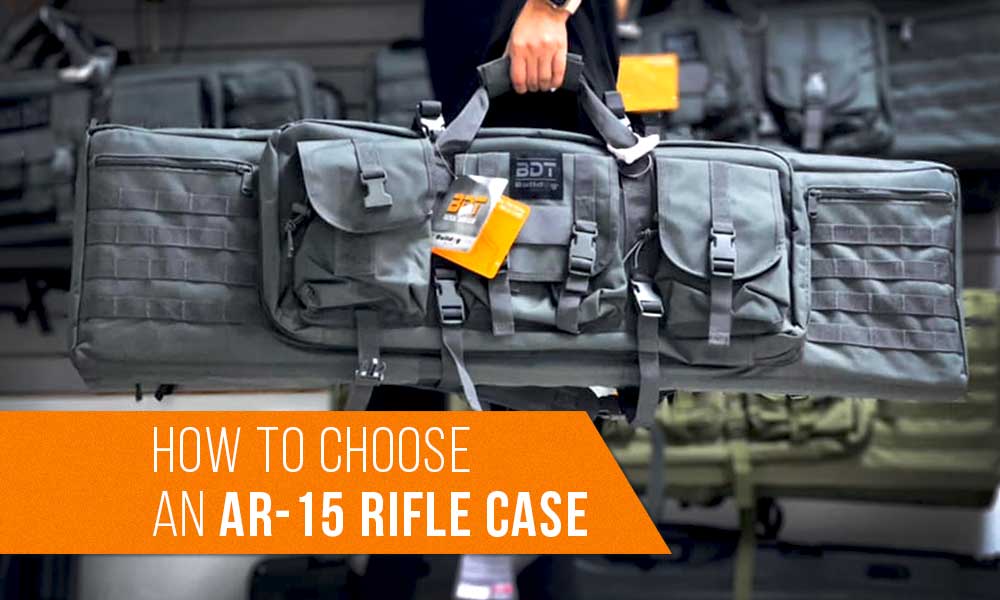
Last Updated on
Contrary to a common-among-novice-shooters belief, getting a firearm is only the first step in the line of expenses that the shooting hobby entails. An unpleasant surprise for some and an awaited reality for others, additional spending, both one-time and recurring, goes hand in hand with gun acquisition. It’s hard to tell whether gun cases belong to the first or the second group. What we know for sure is that a carefully chosen AR-15 rifle case can serve you faithfully for many a year. That is if you put thought into the choosing process.
The choice of AR-15 rifle cases is anything but scarce, and that is both a blessing and a curse. How does one figure out the differences between various cases and find the one they can make the most of? By accumulating years-worth of experience and trial and error method. Or, as an alternative, you can just read the article we’ve compiled. It’s no Ph.D. thesis on gun cases, and you won’t find any understanding-changing revelations here. Nonetheless, it can walk you through the basic steps of choosing an AR-15 rifle case. Maybe we’ll manage to clarify some confusing misconceptions in the process. In that case, we’ll consider our mission more than accomplished.
Table of Contents
Reasons to Get an AR-15 Rifle Case
The Main Debate: Soft vs. Hard
Soft Gun Cases
Hard Gun Cases
Storage Capacity: Two for One
Retention is Crucial
Extra Features Matter
Reasons to Get an AR-15 Rifle Case
First and foremost, let’s decide whether it’s worth getting a gun case in the first place. After all, firearms are often too pretty to let their good looks languish in AR-15 rifle cases. And guns are perfectly legal to own, so there should be nothing wrong with that, right? Well, even though many states permit open carry, there is an unspoken social contract not to carry firearms openly.
The view of an openly carried firearm is likely to cause alarm and distress since people don’t know what to expect from a person like that. The type of firearm also matters. A person carrying a handgun will probably cause less disturbance than one with a rifle or a shotgun. We are social creatures and don’t want to cause unnecessary inconvenience to people around us. Unless you have an improvised shooting range in your backyard, you will need to move around your town to reach one. In that scenario, a rifle case will make the transportation process incomparably less stressful for passers-by.
The mental well-being of other people is not the only reason to acquire an AR-15 rifle case. Even the most affordable firearm is an investment, and it’s quite reasonable to want to keep your investment in good condition. Leaving your rifle to gather dust on the top shelf is hardly a decision of a responsible gun owner. A firearm needs to be stored in a case that will protect it regardless of how often you plan to use it. It also makes transportation easier for you and safer for the gun.
In short, getting an AR-15 rifle case will benefit all parties involved. It will increase the longevity of your firearm, make maintenance a less urgent issue and make gun transportation less stressful for you and the people you come across. Looks like a win-win-win situation to us.
The Main Debate: Soft vs. Hard
There are two main varieties of firearm cases: soft and hard. Their names are very suggestive, and it’s easy to tell the two apart even if you’ve never seen either before. Though essentially performing the same function, soft and hard cases are very different. Those differences are what define them and make them preferable in certain cases. That choice is probably the most significant one you will make when looking for a gun case. That’s why we decided to take a closer look at this particular feature to give you a better understanding of how the materials affect the performance.
Soft Gun Cases
Soft gun cases may take different forms, but they all look like covers or pouches made from soft materials like high-denier nylon. That feature determines the advantages and disadvantages of such cases. Soft cases are lightweight, so they are an optimal choice for situations where you need to carry your rifle for a long time. They come in many sizes ranging from smaller cases that can only house a disassembled AR-15 to larger ones that can store two scoped rifles as well as handguns and range gear.
Because of the materials, such cases are more affordable than their hard counterparts. If mobility is one of your priorities, soft cases are just what you need. They are less bulky and often feature additional slings that allow for wearing such cases as backpacks. Their construction allows manufacturers to add pockets on the sides of the case and inside it, increasing the general capacity.
Note that those features are not a must: many soft cases lack shoulder straps and external pockets. The difference is that hard cases don’t have any regardless of the model.
Hard Gun Cases
Rigid and permanent in their form, hard cases shine where soft cases don’t. They look like elongated suitcases with the exterior made from sturdier materials like injection-molded plastic and aluminum. Naturally, they offer better protection from external impact than soft cases. For the same reason, they are mandatory for transportation by air. By mandatory we mean you won’t be allowed to proceed unless you have your rifle stored in a hard case.
Though unparalleled protection is the primary benefit of hard gun cases, it is not the only one. Such cases offer better security since they usually feature full-fledged locks, whereas soft cases have nothing but zippers. Even though zippers can be locked together, the rest of the case remains vulnerable to potential assaults. Cutting through the fabric is much easier than through injection-molded plastic. By getting a hard case, you reduce the chances of someone messing with your AR-15 rifle this way.
Some other pros and cons will be discussed later in the article so as not to pile them up in two paragraphs. As of now, your choice is between lighter and more mobile soft cases and sturdier and more secure hard cases.
Storage Capacity: Two For One
As we already mentioned, cases come in different sizes and capacities. The length ranges between 32 and 60 inches, so there is a case for every rifle regardless of its general length. Nobody in their right mind would go for a case shorter than a rifle, but having too much free space can too pose certain inconveniences. The general rule is to add 2 inches to the rifle’s overall length, but that is the minimum you should go with. Such a case will be a tight fit, but there won’t be much-unused space, and it will be lighter than its bigger siblings. A longer case will leave more room for additional gear, but it will also weigh more.
The size of the case is closely connected with its capacity. Getting a separate case for every one of your rifles (if you have several) will cost you a pretty penny. And if you want to take two rifles to the range, carrying two cases might turn out very cumbersome. As a rule, hard cases leave you no choice in that regard. They are not fitted for storing multiple rifles. The best you can get is a place for a handgun and pieces of range gear.
The situation is different with soft cases. They are more forgiving in terms of capacity. Some cases even feature removable divider pads for separating firearms within the case. Many have compartments with webbing, straps, or velcro. As such, soft cases offer more storage options, but they come at a cost.
Retention is Crucial
Apart from being protected from the elements, an AR-15 should also be secured within the case. Soft and hard cases utilize different retention methods and have different interiors, but can fulfill that function pretty well. Hard cases contain an interior foam lining that prevents rifles from moving around whatsoever. It is the most reliable method that ensures that a firearm will stay in one place. Soft cases utilize padding and internal straps, sewn into the case to ensure your rifle doesn’t move around the case.
Naturally, foam is a more reliable retention method. It fills the entirety of the case, eliminating any possibility of a rifle moving. Straps secure the firearm, but they don’t provide 100% retention. For that reason, only firearms stored in hard cases are allowed for air travel. If it’s only a car drive, a soft case should suffice. But if your firearm is going to have a rollercoaster ride, make sure to have it as secure as possible.
Extra Features Matter
Everybody wants to get their money’s worth (or even more if possible). Won’t it be nice to carry a few boxes of ammo together with your rifle? Well, if you are after extra features like additional pockets, a soft case can meet that need. Quite often they feature several external pockets that can house range gear or other shooting essentials, depending on whether it’s a range bag or a hunting soft case. Hard cases cannot boast this feature. Their exterior is very plain and deprived of any additional features. This is done not to compromise the safety of the firearm stored, which is the primary focus of hard cases. There is one option, though: you can replace the foam with one that has carved, shaped grooves. Depending on the size of your case, that can increase its storage capacity and free up space for storing magazines and other components.
Choosing an AR-15 case is not as hard as it might seem. Once you know your priorities, the choosing process becomes much easier. If you have plans to travel with your rifle and want to give it the best protection possible, go for a hard case. Should you only need a case for more convenient transportation to the range and have a tight budget, a soft gun case will do the trick.

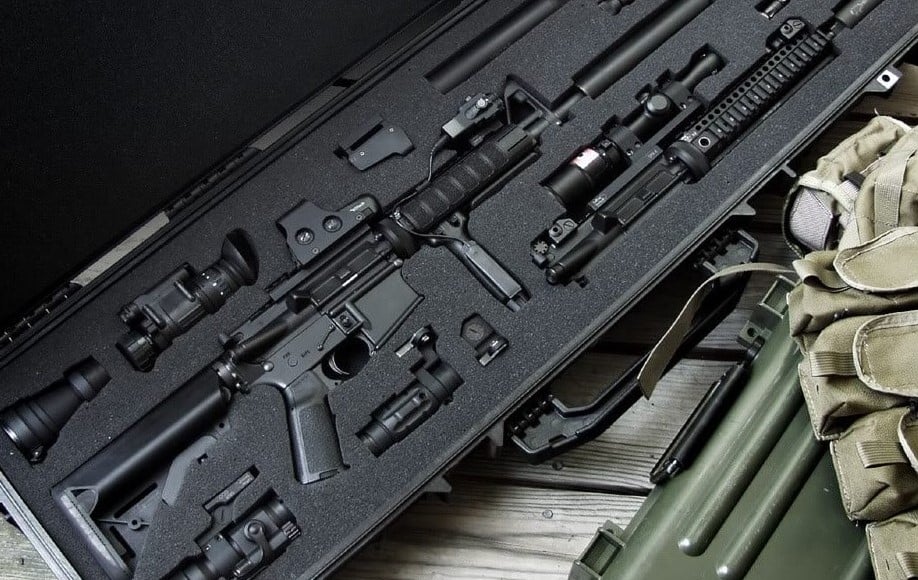
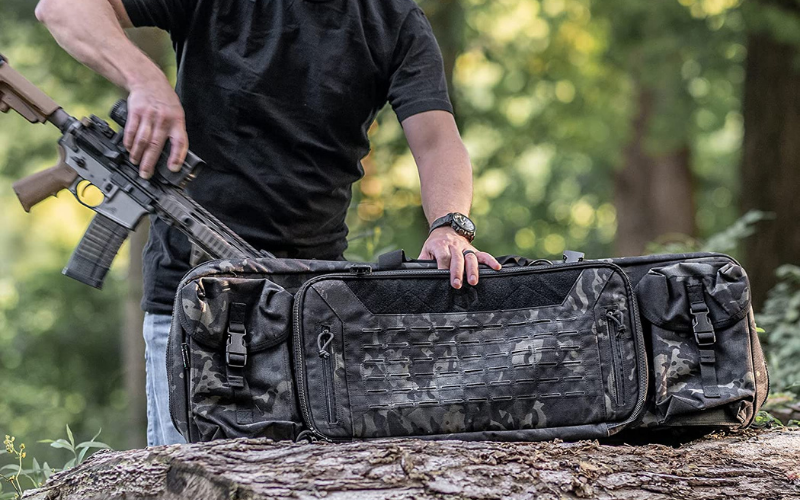
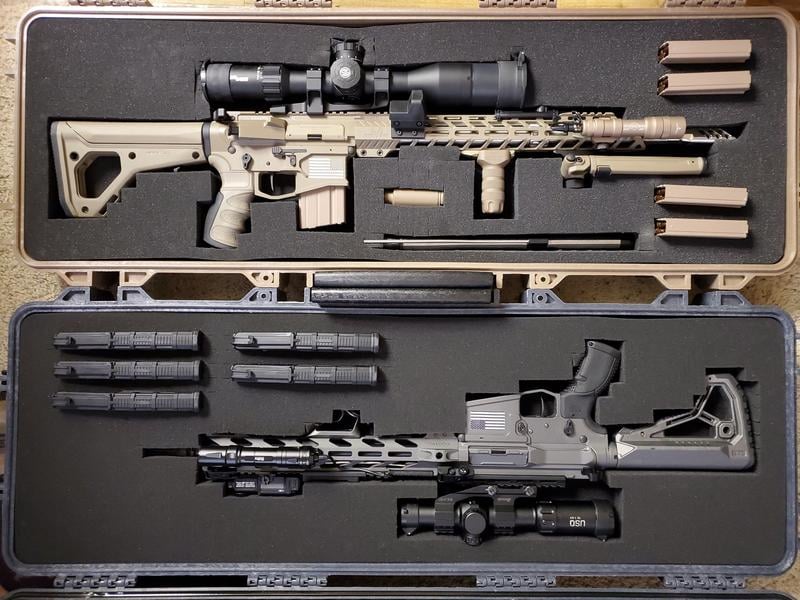
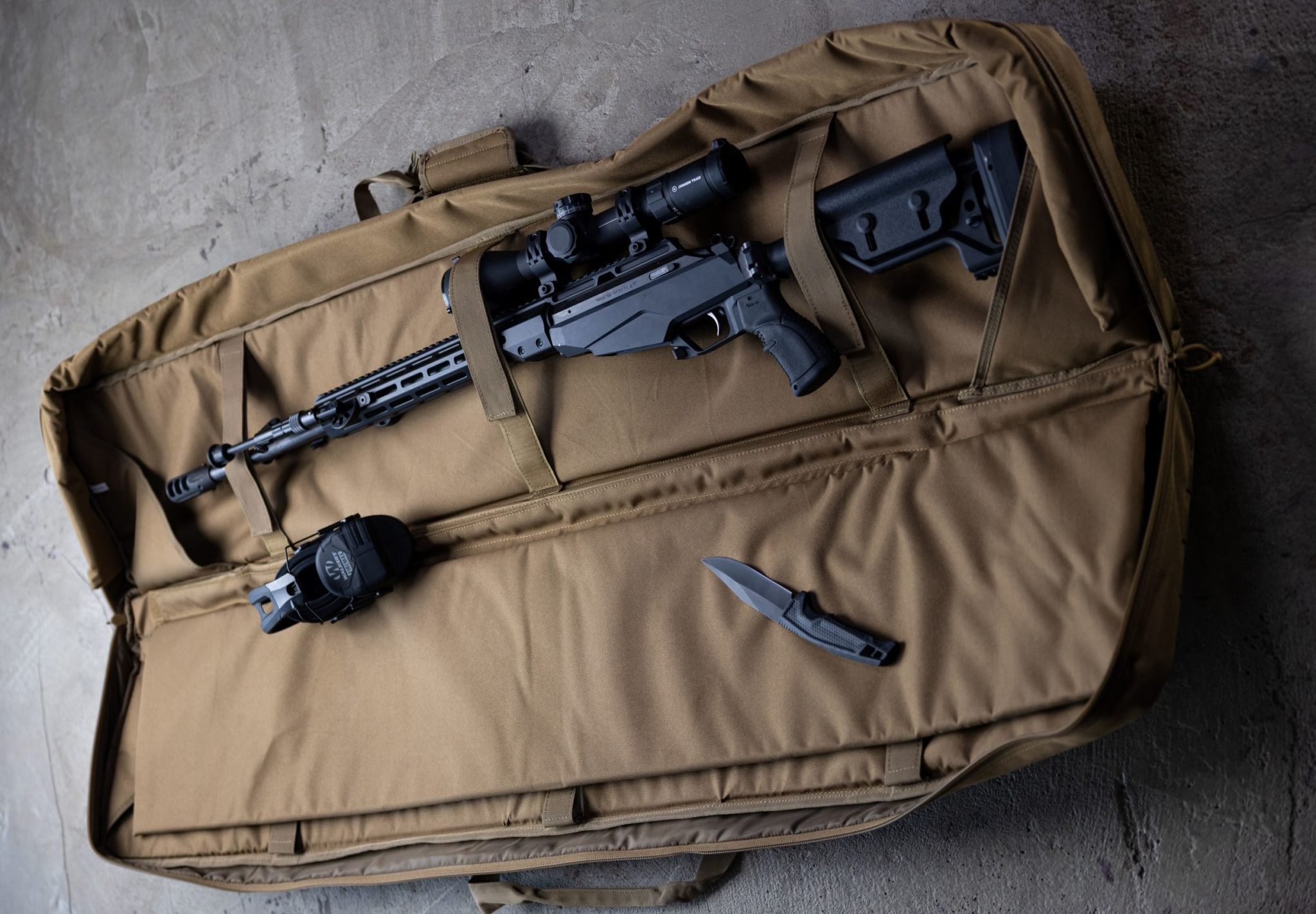



Leave a Reply